Richard Henry Pratt informs the Office of Indian Affairs that the construction of the Carpenter, Shoe, and Tin Shops are underway and requests authority to purchase material for the addition of more Industrial Shops.
Industrial Training - General
Use when five or more trades are discussed.
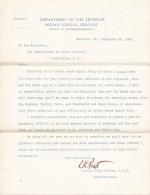
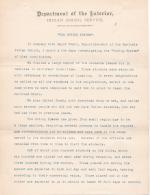
A. O. Wright, Supervisor of Indian Schools, provides a report on the Carlisle Indian School focusing on the outing program. Wright provides details of the school as he found it as well as provides recommendations for improvement.
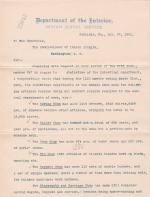
Richard Henry Pratt provides statistics related to the industrial departments including the sewing room, tailor shop, shoe shop, tin shop, harness shop, blacksmith and carriage shop, printing office, and the laundry over the previous twelve months.
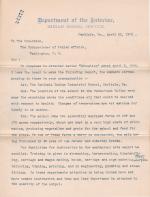
Edgar A. Allen responds to an Office of Indian Affairs circular by answering various questions. In particular he focuses on the industrial training of the school, the outing system, and provides details on the transportation costs incurred in bringing students to Carlisle.
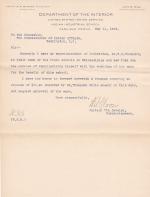
William A. Mercer forwards voucher covering the expense of W. G. Thompson's travel to visit trade schools in Philadelphia and New York.
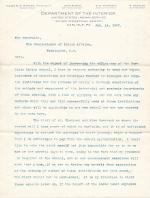
William A. Mercer requests authority to have Kate S. Bowersox and W. G. Thompson travel to the Hampton Institute and the Tuskegee Institute to learn from their teaching methods.
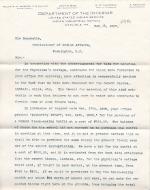
William A. Mercer informs the Office of Indian Affairs that no bids were received for cement blocks, lintels, sills, etc. As a result, Mercer requests to purchase the entire block-making outfit along with materials to make the blocks on the school grounds. By producing the blocks at the school it would further allow industrial training in a…
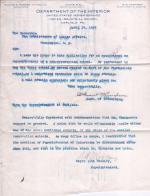
W. Grant Thompson, Superintendent of Industries, requests a position as a superintendent of a school. William A. Mercer forwards the request along with his recommendation and a note that his position is to be discontinued on at the end of the fiscal year.
A note from J. H. Dortch is included where he recommends him for a small…
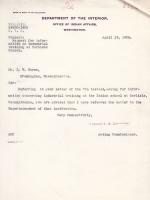
Acting Commissioner of Indian Affairs C. F. Larrabee encloses a letter to the Carlisle Indian School Superintendent. The letter is from D. W. Horne, who asks for information regarding industrial training.
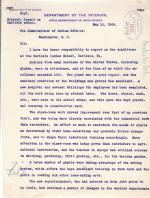
These materials include an inspection report performed by Superintendent of Indian Schools Estelle Reel in May, 1908. Reel's report mentions the buildings and grounds (including the new hospital), improvements since the previous visit, student oratory work, and student artwork.
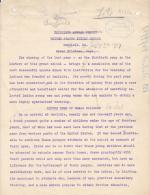
These materials include correspondence and a draft of Superintendent Friedman's 30th Annual Report for the Carlisle Indian School, reflecting the period ending July 31, 1909. Friedman forwarded the draft to a Bureau official, along with information on how to have news published in Carlisle's student newspaper. The annual report includes…
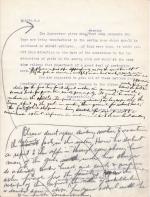
These materials include an inspection report of Charles F. Peirce, Supervisor of Indian Schools, on the Carlisle Indian School in early 1912, as well as correspondence regarding the reports. Peirce makes a number of recommendations, in particular regarding the business and telegraph departments, and provides an overview of the schools various…
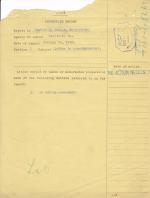
These materials include an excerpt of Charles F. Peirce's inspection report of January 1912, and Superintendent Moses Friedman's responses to his recommendations. Friedman rejected many of Peirce's recommendations regarding the chain of authority and command at the school. Other recommendations, focused on industrial curricula and student…
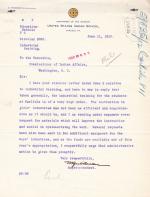
Carlisle Indian School Superintendent Moses Friedman informs the Commissioner of Indian Affairs that the industrial training at the school is "of a very high order," but that the girls' industries could be improved. Additionally, he refers to several requests that he's made for additional equipment for boys' and girls' industries.
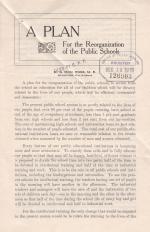
Commissioner of Indian Affairs Cato Sells writes a lengthy letter to G. McM. Ross in which he thoroughly disagrees with Ross' claim that Carlisle Indian School students should be paid for their labor, reasoning that the government pays for their lodging, food, and education, that students can earn money on outing, and that their labor at the…
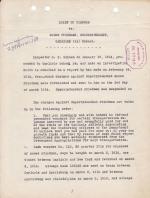
These materials include legal documents and correspondence regarding charges filed against Superintendent Moses Friedman after an inspection and investigation of the Carlisle Indian School. Included in the documents are the official charges against Friedman, his answers to those charges, correspondence regarding the charges, and the…
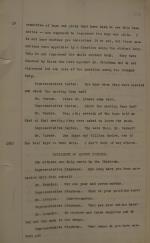
The typed transcript of August Kensler's first testimony before the Joint Commission to Investigate Indian Affairs. At the time Kensler worked as quartermaster for Carlisle.
In his testimony Kensler explains his role in supervising the industrial training program and answers questions about the flour ration set by the Office of Indian…
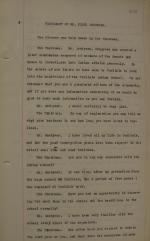
The typed transcript of Fisk Goodyear's testimony before the Joint Commission to Investigate Indian Affairs. (His name is spelled Fiske Goodyear in this transcript.) At the time Goodyear was working at a local coal and lime business, but had previously worked at Carlisle as storekeeper and clerk in the 1890's.
In his testimony Goodyear…
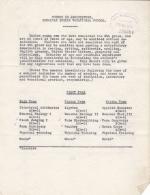
Correspondence regarding the proposal to abolish the business/commercial department at the Carlisle Indian School while adding new courses focusing on home economics, mechanical arts, nursing, and agriculture. An additional focus is on the beginning of the Ford Outing Program. A copy of The Carlisle Arrow (Vol. 11, No. 22) that…

Representative A. Mitchell Palmer recommends Carnegie Technical School Professor J. H. Nolen to be teacher of an upcoming practical building course at the Carlisle Indian School.
Commissioner of Indian Affairs Cato Sells informs Palmer that the creation of the position is not official yet, and if it does become official,…
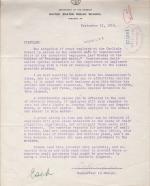
These materials include correspondence and a circular internal to the Carlisle Indian School regarding economy and waste in the school's industrial departments.
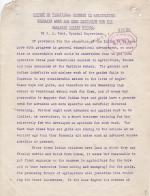
Report on the Vocational Courses in Agriculture, Mechanic Arts and Home Economics for the Carlisle Indian School by H. L. Kent, Special Supervisor and correspondence surrounding the report. Kent's report focuses on making Carlisle a secondary vocational school focusing on agriculture, mechanical arts, and home economics including courses of…
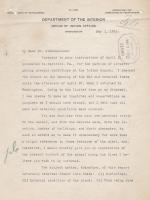
These materials include an inspection report of J. H. Dortch for his visit to the Carlisle Indian School. His report includes discussions of new staff, the school's physical plant and curriculum, and continued disciplinary changes being enacted under Superintendent Oscar Hiram Lipps.
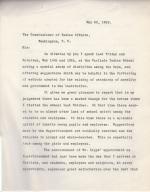
These materials include a report by H. B. Peairs on the discipline among boys at the Carlisle Indian School. The report discusses changes enacted by Oscar Hiram Lipps, who was promoted from Supervisor in Charge to Superintendent during this discipline investigation.
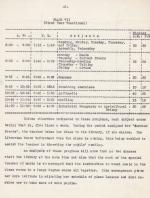
These materials include correspondence, ledger pages, inspection reports, and government forms regarding multiple health topics connected to the Carlisle Indian School. Included is an Inspection Report of H. B. Peairs for February 1916, Physician's Semiannual Reports for the first and second halves of 1916, statistical reports of diseases for…
